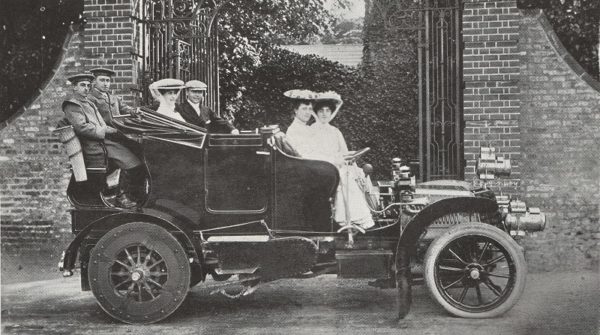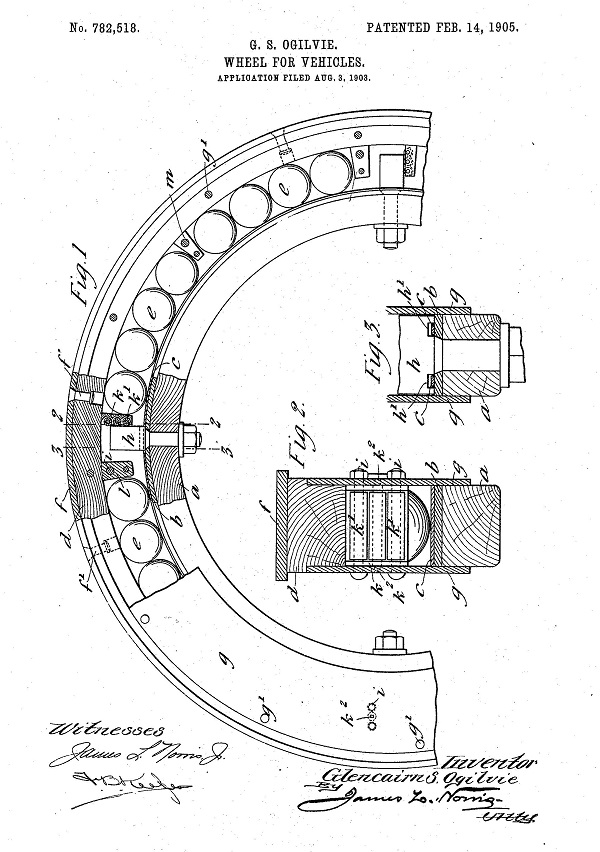
This snapshot of a smiling group of elegant people aboard a smart Napier car is remarkable for neither the people nor the car, but for the bizarre “Vieo” rear wheels. Their inventor was Glencairn Stuart Ogilvie of Woodbridge in Suffolk, an architect, barrister and playwright. The origin of Vieo is not given, but was probably taken from the end and beginning of his name.
Ogilvie was granted United States Patent 782,518 on February 14th, 1905. The patent mentioned the original applications in the USA and in Britain, all of them in 1903. In those early days of motoring the frailty of pneumatic tyres was a real problem for motorists, and it was thus not surprising that inventors turned their minds to solid alternatives that might still give a sufficiently cushioned ride. Ogilvie started his patent specification with the aim of his invention:
“This invention relates to improvements in the construction of wheels for motor-cars and other vehicles, and is specially directed toward providing a durable tire for such wheels by the use of which a certain degree of resilience is obtained without incurring the danger of punctures, which is inseparable from the use of the ordinary pneumatic tire.”
From then on everything got rather technical – but a reproduction of the drawing in the patent makes things clear. The outer wooden rim had side plates that overlapped an inner wooden rim (these are very clearly seen in our snapshot). Between the two rims were:
“…a number of elastic cushions, which may consist of solid or hollow cushions of india rubber or other elastic material or may be metal springs…”
Those round cushions are shown in the drawing:
Ogilvie was confident that his invention would work. The caption to the photograph stated:
“… These wheels have been entered with the A.C.G.B.I. [the Automobile Club of Great Britain and Ireland, forerunner of the R.A.C.] for a 4,000 mile reliability trial (commencing on August 23rd), and the results will be looked forward to with great interest.”
History does not relate the outcome of the trial, and the complete lack of any other mention of Ogilvie’s invention seems to confirm that this idea went the way of many others at the time. The smiling group on the Napier must have been shaken (perhaps literally) to find that it did not catch on. But at least we can see today the fruits of Ogilvie’s other venture, Thorpeness. He had inherited an estate of 6,000 acres in Suffolk, and in 1910 decided to build a private fantasy holiday haven for the upper middle classes. It survives today and is noted for its water tank, clad in wood to make it look like a small house on top of a five-storey tower. It is known as the “House in the Clouds”.
Picture courtesy of the Richard Roberts Archive








Leave a Comment